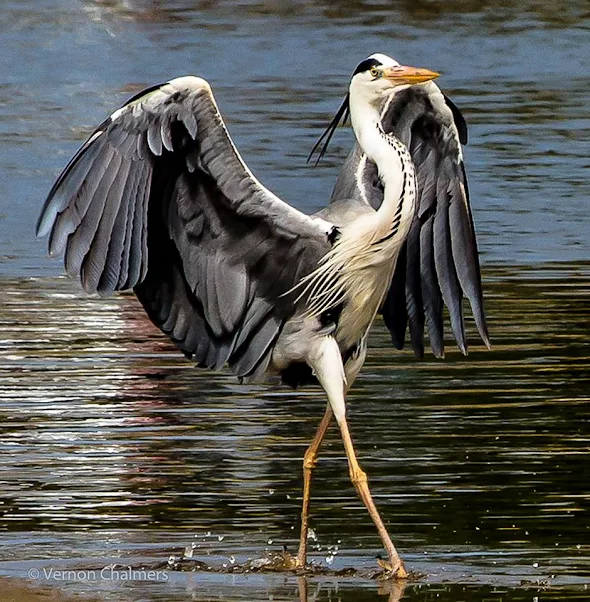Used Canon EF 100-400mm f/4.5-5.6L IS II Lens For Sale, Cape Town R26 000 (neg)
With / Without Canon Extender EF 1.4X III Teleconverter
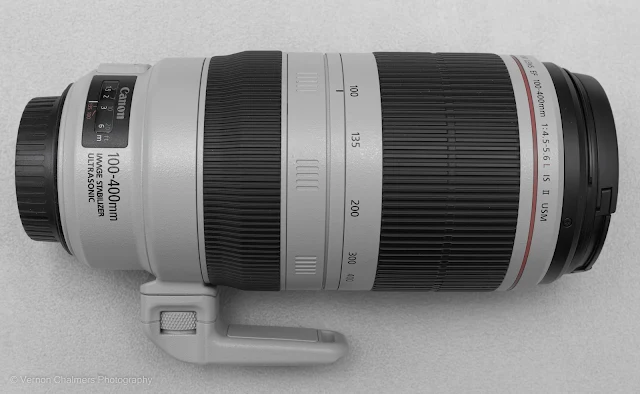 |
| For Sale: Canon EF 100-400mm f/4.5-5.6L IS II USM Lens, Cape Town |
Please Note: This Lens is Sold
Pre-Owned Canon EF 100-400mm f/4.5-5.6L IS II USM Lens : Field-Tested by Vernon Chalmers
This Canon EF 100-400mm f/4.5-5.6L IS II USM Lens is For Sale currently in Milnerton (opposite Woodbridge Island), Cape Town. I am selling this lens on behalf of a private client. The lens is just over two years old and I have had the opportunity to carry out various in-field pre-sales evaluation shoots over the past few weeks (at Kirstenbosch Garden and Woodbridge Island).
General lens description
The Canon EF 100-400mm f/4.5-5.6L IS II USM Lens is a professional wildlife lens popular amongst Canon EOS / EOS R enthusiast and professional photographers alike. It is versatile lens with a variable aperture range (f/4.5 - f/5.6) and a zoom range between 100mm - 400mm which is ideal for wildlife, nature and other genres. The largest aperture (f/5.6) at 400mm makes the lens ideal for close-up garden bird, flower and insect photography. This is mainly due to its impressive Minimum Focus Distance (MFD) range = lens to subject focus range. This lens will perform well on any Canon EOS / EOS R APS-C (Crop) of Full-Frame body. View brief / detailed lens specifications below the four images further down.
Note: For pairing this lens with any EOS R APS-C / Full Frame body the
Canon Mount Adapter EF-EOS R optional accessory is required. It is fully compatible with all Canon EOS digital bodies without any adapter.
Impressions of the lens and performance
I paired the lens with one of my mid-range Canon EOS 70D (APS-C / Crop) bodies for both field trips. The lens performed well within the expected performance of any other Canon professional L-Series I have used (my own) / evaluated (on behalf of Canon SA) at the same locations in terms of sharpness, autofocus speed / accuracy, Image Stabilisation and ergonomics. I have been using Canon L-Series lenses for more than 10 years and although I am used to most specifications I was highly impressed with the minimum MFD (0.98 m) for such a 'long' lens - meaning I could really focus from close proximity on butterflies and small birds - and still shoot at 400mm. The autofocus, sharpness and bokeh = quality of deliberate background blur is also an improvement over the original lens (mark 1 version). The lens is more / less the same weight as the previous generation, but still marginally lighter than most lenses in the traditional non-Canon 150 - 600mm category.
Focal length / Exposure settings used
I mainly used the lens in the 300 to 400mm focal length range with the Canon EOS 70D either in Aperture (Av) Mode or Manual mode with Auto-ISO at various Apertures and Shutter Speeds.
Close-Up Photography at 400mm
The lens can also be used with various compatible extension tubes and close-up lens filters for close-up photography (reducing the MFD) at up to full focal length reach of 400mm. The 4-Stop Image Stabilisation system works well to counter camera shake when shooting close-up subjects handheld.
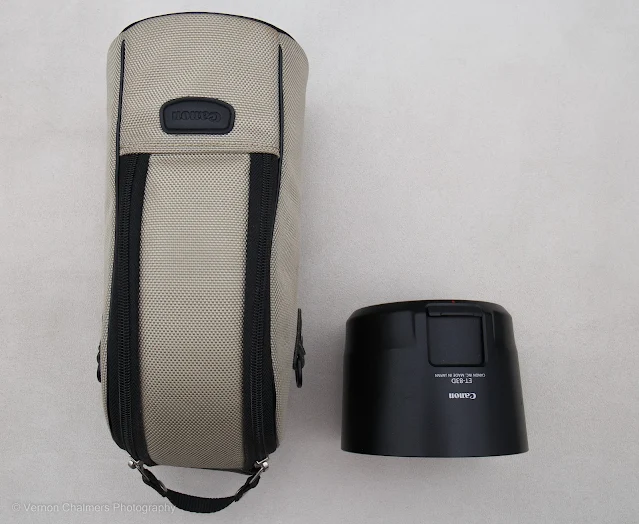 |
| Original Canon Lens Case and Canon ET-83D Lens Hood |
Recommendations for considering this lens for purchase
This copy of the Canon EF 100-400mm f/4.5-5.6L IS II USM Lens is in immaculate condition. I would personally rate the lens a 9 out of a possible 10. The lens was well maintained, stored in lens case when not used and above all, not used very often - as the client uses two bodies with different lens pairings - one for wildlife and then one for everything else. All Canon bespoke accessories are provided - even with original Canon packaging. I personally bought the original EF 100-400mm f/4.5-5.6L IS USM lens from the same client almost two years ago (for the same reasons as above) and was just as pleasantly surprised with the condition of the older lens - and that lens was used over a much longer period than this lens. This lens will add professional value to any Canon photographer looking for a high-quality L-Series lens for personal and / or professional application(s).
Client's personal application and use
My client mainly used this lens, on occasion, for wildlife and nature photography. This lens (in conjunction with other Canon L-Series lenses) were paired from time to time with a Canon EOS 7D (APS-C), EOS 5D Mark III or EOS R6 (both Full Frame). The images I've seen captured with this lens from all three bodies were mostly sharp, well focussed, vibrant with pleasing bokeh (background blur) - where applicable.
Canon Extender EF 1.4X III Teleconverter Option
The lens is available for purchase with or without the Canon EF 1.4X III Teleconverter. The teleconverter will further extend the lens (by 1.4x) - especially when used with a Full-Frame Canon EOS or Canon EOS R body.
The extender / teleconverter is also in excellent condition (it was acquired at the same time of lens purchase). I did not use the extender as I used the Canon EOS 70D - which already provides for extended magnification with the 1.4 crop factor of the camera.
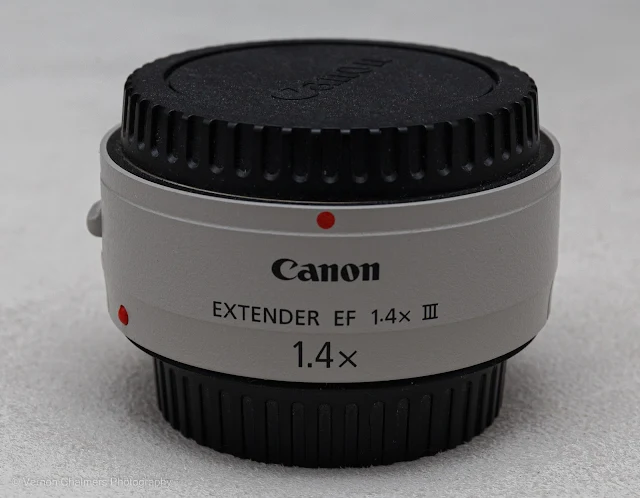 |
| Optional For Sale Lens Accessory : Canon Extender EF 1.4X III |
Pricing Options:- Canon EF 100-400mm f/4.5-5.6L IS II USM Lens R26 000 (neg)
- Canon EF 100-400mm f/4.5-5.6L IS II USM Lens with Canon 1.4 X Extender R28 000 (neg)
- Canon Extender EF 1.4X III Teleconverter R3 500 (not negotiable)
Reason for selling:
Client upgraded to a Canon EOS R6 System (with RF 100-500mm lens) recently.
Purchasing process / Possible purchase
The lens and accessories are available for inspection / testing at Arnhem Milnerton (either in my Studio or Home / Office).
Client will ultimately decide on final price / payment will be direct to client.
Contact Me direct for more information / scheduling an appointment.
Below are four Vernon Chalmers images captured recently with this pre-owned Canon EF 100-400mm f/4.5-5.6L IS II USM Lens (paired with the Canon EOS 70D)
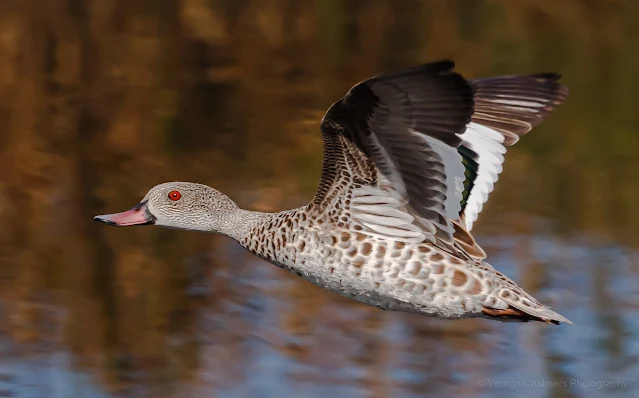 |
| Canon EF 100-400mm f/4.5-5.6L IS II USM Lens : Woodbridge Island |
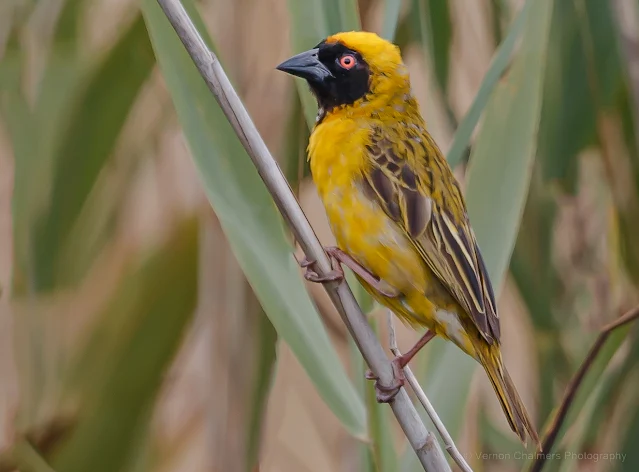 |
| Canon EF 100-400mm f/4.5-5.6L IS II USM Lens : Woodbridge Island |
 |
| Canon EF 100-400mm f/4.5-5.6L IS II USM Lens : Kirstenbosch Garden |
 |
| Canon EF 100-400mm f/4.5-5.6L IS II USM Lens : Woodbridge Island |
Canon EF 100-400mm f/4.5-5.6L IS II USM Lens Key Specifications
- Lens Type: Zoom lens
- Focal Length: 100–400mm
- Image Stabilisation (4 stops)
- Lens Mount: Canon EF
- Max Aperture: f/4.5–5.6
- Min Aperture f/32–40
- Min Focus (MFD) 0.98 m (38.58″)
- Max Magnification 0.31×
- Weight :1570 g (3.46 lb)
- Length: 193 mm (7.6″)
Canon EF 100-400mm f/4.5-5.6L IS II USM Lens Detailed Specifications
Photography Training
Intaka Island |
Kirstenbosch Garden |
Woodbridge Island



























